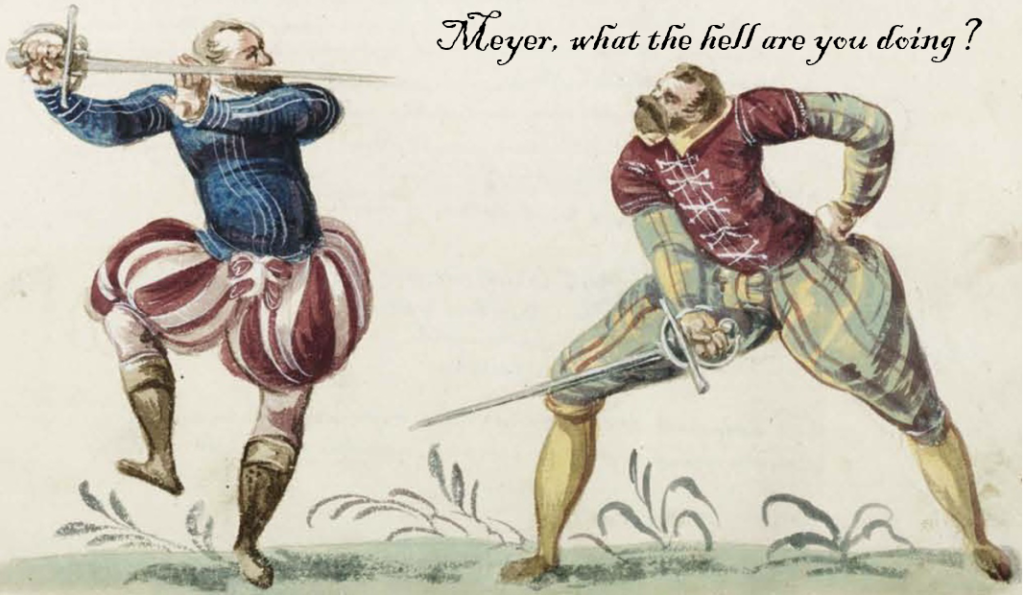
Raising the foot prior to the thrust serves many purposes, even if you wouldn’t do it in an actual fight. First, it eliminates the question about how much weight should be on each foot. All of your weight much be over the back foot or you will fall over.
When you step, assuming you land on the ball of your foot, you will be in a good posture. It just happens naturally, regardless if you choose to be upright or leaning forward. Thus, when a fencer asks themself, “Am I in a good posture?”, they have something to compare it to.
It also reveals bad footwork. Normally if you land on the heel, you’ll roll forward. But this is subtle and you may not realize that it is causing your thrust to go astray. But with this particular action, it exaggerates the negative effects so you can’t help but notice that you stepped poorly.
By starting your action with your foot already in the air, you have more freedom to choose which direction to step. If you lunge in the style taught by Giganti and Capo Ferro, starting with the arm extension and lean, then you’ve already committed yourself to stepping in a particular direction.
There is also an argument that this kind of footwork is faster. In Fabris book 2, the author also starts with a foot in the air. He claims a single-tempo step is the time it takes to lower that foot while raising the other. A modern reader may equate this footwork style to peddling a bicycle. Fabris contrasts to the slower 4 tempi steps, where you raise and lower the front foot (2 actions) and then raise and lower the back foot (2 more actions).
As with the raised foot, pulling the arm back also affects structure. In order to balance on one foot with the arm pulled back, the front shoulder has to rotate forward. This pulls up the left arm, which is what you want anyways. (Allowing the left shoulder to drop loosely disrupts the right shoulder and upsets accuracy of the thrust.)
Another benefit of pulling the arm back is that it Refuses the Blade, meaning the opponent is refused the opportunity to engage and possibly constrain it.
This essay is part of our Meyer Rapier Drill Book. You can find a link to the current version on our resources page.